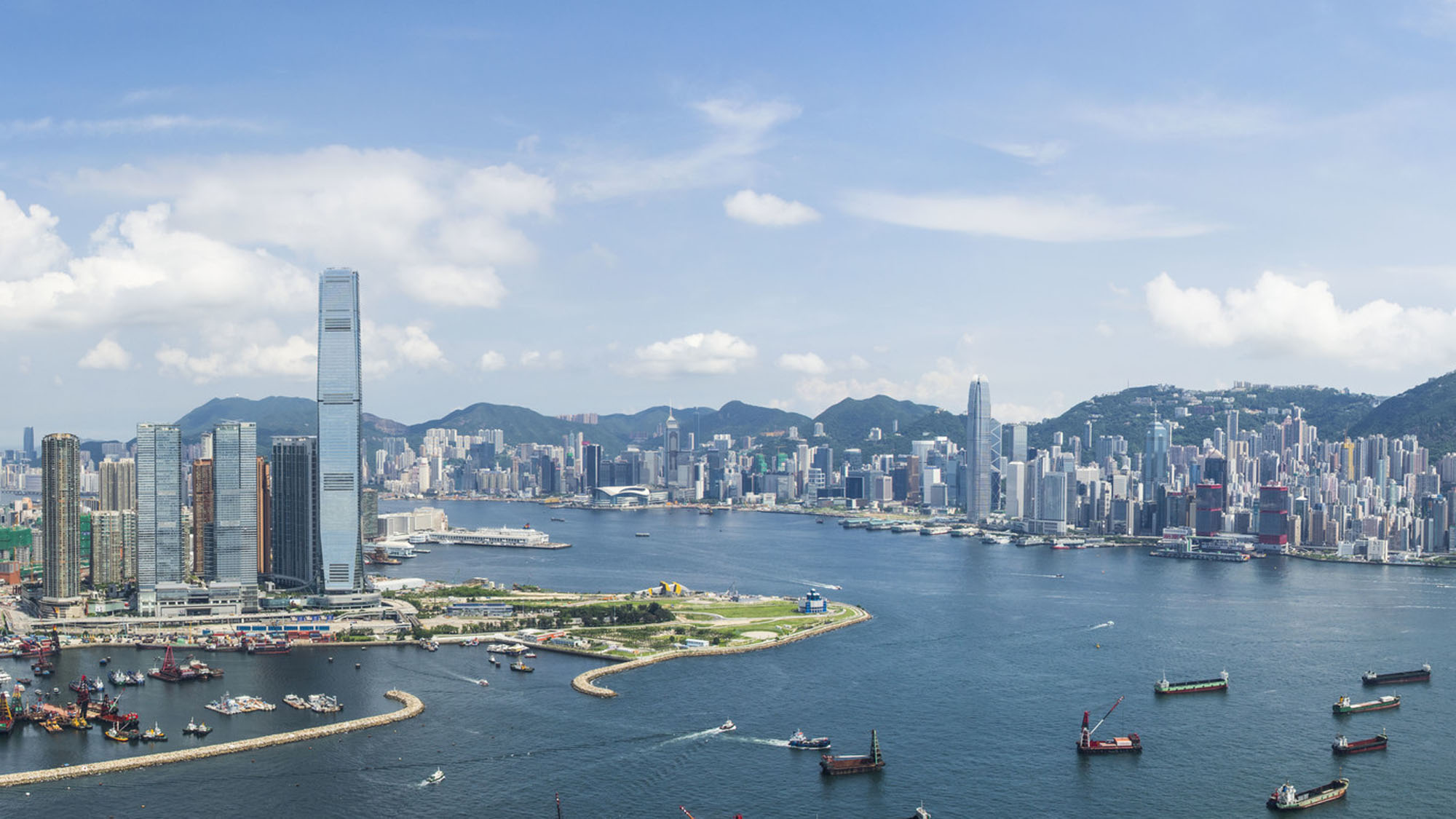Calling all architects to join the conversation! Rate and review your favorite design softwares and hardwares on Architizer’s Tech Directory, a new library of tech tools for designers.
Oscar Wilde famously argued that art is, by its nature, useless. That is, if it is any good. In a letter to a fan named Bernulf Clegg (great name, by the way), Wilde argued, “If the contemplation of a work of art is followed by activity of any kind, the work is either of a very second-rate order or the spectator has failed to realize the complete artistic impression.” For Wilde and others in the Aesthetic Movement, didacticism was the mark of the philistine. A great painting or symphony should not stir the observer to change their life; it should simply be.
There is much to be said for Wilde’s perspective. There is also, of course, much to be said against it. For one, it is spectacularly inapplicable to architecture. In architecture, the inverse of Wilde’s dictum is true. In order to be beautiful, a building must be useful. It also must, in its form, speak to its function, and to the needs of both those who will use it and the surrounding community. Finally, a successful building must make some kind of sense within its visual context. It’s not enough to simply be.
There are many ways for a building to speak to both its function and context. One does not need to reach for extremes, for instance, by eschewing all ornament and opting for pure ascetic functionalism of the Brutalist order. On the other hand, it is not a good idea for architects to pretend they are medieval craftsmen or Victorian stonemasons (or whatever) and hide all traces of modernity from their design in order to blend in with a historic environment. Indeed, in 2024, both approaches constitute a kind of inauthentic posturing, or kitsch, which the art critic Clement Greenberg defined brilliantly in 1939 as “vicarious experience and faked sensations.”
The preeminent domain of kitsch, or “vicarious experience and faked sensations,” is of course social media. And indeed, buildings that were intended as social media hotspots are almost always kitsch. There is something off about these structures, some soul sucking quality that makes it impossible to admire them. I think this has to do with the nature of social media, which is not the real world but an insidiously absorptive simulacrum. When architects design for social media, they are privileging this realm of appearance over reality. The buildings might exist in the real world, but they belong to the machine.
The first structure that comes to mind here is Thomas Heatherwick’s The Vessel (TKA). This is an observatory deck that rises from the sterile and depressing Hudson Yards Redevelopment Project on the west side of Manhattan, a fake neighborhood of glass office towers and luxury shopping centers that has been under development since 2012. The view from the top of The Vessel is okay, but one cannot see it for themselves anymore. After a series of suicides, the Vessel was closed, and it stands now as a (roughly) $200 million monument to wastefulness. There is no way to repurpose a building that was designed solely for selfies.
Social media optimized kitsch architecture is very popular in the United Arab Emirates, especially in tourist districts such as Saadiyat Island in Abu Dhabi. It is not coincidental that this is a country with an atrocious human rights record. As Theodor Adorno noted, there is something sinister about the falsity of kitsch, which too often serves as a disguise for exploitation. In the UAE, so many high profile projects are walled gardens that shut out the reality of Emirati society.
The grand monuments of Saadiyat Island, including Frank Gehry’s Guggenheim Museum and Jean Nouvel’s Louvre Abu Dhabi, were built largely by migrant workers who are not allowed to strike or advocate for themselves on threat of deportation or imprisonment. The deadly working conditions here have been extensively documented by the Guardian, Human Rights Watch, and other sources. In response to these issues, in 2011, 130 artists from all across the world urged a boycott of the Saadiyat Island museums.
Saadiyat Island has given Gehry and Nouvel a canvas in which to play out their wildest fantasies — in large part because labor here is so cheap. And while Gehry and Nouvel are brilliant architects, it is not surprising that their work on Saadiyat Island is their weakest.
These buildings are dazzling, of course, especially Nouvel’s Louvre, with its floating platforms and webbed dome that evokes the fractal geometries of the Alhambra. But the Louvre Abu Dhabi feels unreal, a controlled environment that says nothing about the reality of life in the region. If a museum, at its best, is a platform for conversation, the Louvre Abu Dhabi is more like a temple, and the god that is worshipped here is wealth. It should not surprise anyone that it is a favorite selfie destination for travel influencers.
The final example of kitsch architecture I want to point to is more popular on Twitter, or X, than Instagram. In particular, it is popular among the conservatives of X. On this platform, there are a surprising number of accounts that frequently attack modern architecture, which they regard as philosophically at odds with the traditional values they hold dear.
These people are not wrong to celebrate the great architecture of the past. And there are certainly ways for architects to design buildings that respect their context. I have written about critical regionalism here in the past, and I really think this is the best lens for thinking about how to update our cities while respecting their visual identity. The flexibility of Critical Regionalism is key. There isn’t a single, clear answer for how architects can respect the past and embrace the future at the same time; the issue must be considered anew with each project. When it is done right, as in HGA’s Marlboro Music Reich Hall, the effect is really quite moving.
Alas, the traditionalists of X do not advocate critical regionalism, but instead champion nostalgic kitsch. To this end, Huwaei’s Research and Development Headquarters in Dongguan, China is often pointed to as a triumph of classicist principles. A post with 15.8 million views by someone who calls themself The Cultural Tutor celebrates the way this corporate campus is built to resemble the historic cities of Europe.
This city is not in Italy, France, or Germany.
It's in China and it's less than ten years old.
This is Huawei's R&D Headquarters, where 25,000 people work, and it might just be the most interesting office building(s) in the world… pic.twitter.com/lgF0RNB380
— The Cultural Tutor (@culturaltutor) March 19, 2024
Like the World Showcase exhibition at Epcot in Disney World, the Huwaei campus is divided into twelve districts modeled after different regions in Europe: Paris, Oxford, Bruges, Burgundy, Fribourg, Luxembourg, Windermere, Granada, Verona, Cesky Krumlov, Heidelberg, and Bologna.
The buildings do look like convincing, if somewhat sterile, facsimiles of their source material. It might be pleasant to stroll through the cobblestone streets of the fake Old Bridge in fake Heidelberg. The big issue here, though, is that this is a completely inauthentic environment, another walled garden, that speaks not to the present but exclusively to the past, to nostalgia.
It all feels very hollow, and for good reason. It’s a lie! The employees here are being made to feel like they are on vacation in Disney World, but they are not. They are working in tech R&D in the suburbs of Shenzhen. There is a fundamental disjunction between what this campus looks like and what it is. I am no psychologist, but this dissonance is likely experienced as stress by the workers. As Adorno said, “wrong life cannot be lived rightly.”
Instead of scrolling Instagram for inspiration, I advise architects to cultivate an appreciation for the world around them. The physical world, that is, not the digital world. It is mundane here, and frustrating, but one thing it is not is shallow.
Calling all architects to join the conversation! Rate and review your favorite design softwares and hardwares on Architizer’s Tech Directory, a new library of tech tools for designers.
Cover image: Photo by iam hogir from Pexels. Free to use through Creative Commons License.




